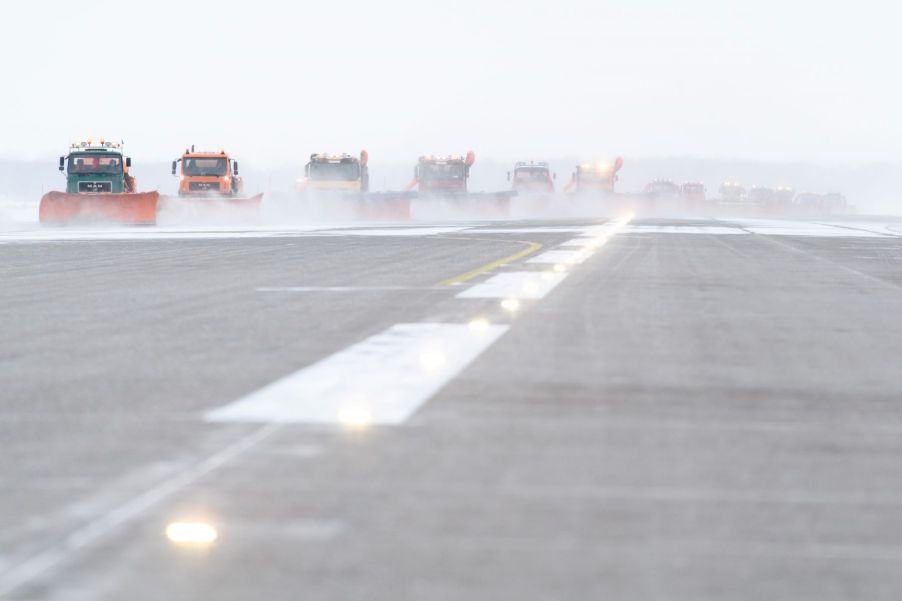
Here’s What to Do if You Hit Black Ice
Driving during the winter can be scary, but most vehicles are equipped with AWD and many useful car safety features. If you happen to get stuck in the snow, options like heated seats can keep you cozy until help arrives. Still, even the most well-equipped vehicle can’t keep you protected if you don’t drive carefully.
Even the most cautious drivers can be fooled by black ice, a deceptively thin and almost invisible layer of ice. You’ll likely encounter this winter hazard at least once in your life, so don’t panic. The U.S. Forest Service tells you what to do when you hit black ice.
How to handle black ice

If you feel your wheels slip over black ice, it might be tempting to hit the brakes and steer away. However, that’s the exact opposite of what you need to do, as you might enter a tailspin and careen off the road. Only when you feel the car sliding left or right should you attempt to gently steer in the same direction.
As you slide, try to slow down your car by immediately lifting your foot off the accelerator. Shifting into a lower gear allows you to regain control of the vehicle more quickly. Once you’ve cleared most of the black ice, steer the car toward an area of the road with better traction. If you can’t find a clear road area, even a patch of textured ice or snow can help you slow down.
Even once you’ve slowed down, you might still skid out. This can be stressful, especially when other cars are coming toward you. Keep your cool, and always steer in the same direction you’re sliding. Pump the brakes throughout the slide until you regain control. If your car has ABS, all you need to do is keep your foot on the brake.
Sometimes going off the road is unavoidable, so your goal is to cause as little damage as possible. You should veer off into an empty yard or field, but a big snowbank can also absorb a car’s impact. Drive slowly back to safety once you’re free, leaving a generous braking distance between you and other vehicles on the road. Additionally, keep your hazard lights on so that other drivers know to pass you if needed.
How can you avoid black ice?
Although black ice often comes up without warning, there are a few ways you can avoid it in the first place. Black ice usually doesn’t form during daylight hours because the road is too warm. Black ice is also more common on bridges or overpasses, where cool air passes both over and under the road.
During the early morning or evening hours, black ice will form as a shiny glaze on the road. You may be able to spot it with a careful eye, especially if the road usually looks rough in normal conditions.
If you’re not confident in your judgment abilities, you can rely on your fellow drivers. If you see cars swerve for no reason away from a particular area, it’s probably black ice. Lastly, use extra caution at night when black ice is virtually impossible to see unless your headlights hit it just right.
How to prevent slippery accidents
Newer cars with built-in traction control and AWD have a better chance of gliding over black ice unscathed. Studded tires or winter tires also give you better traction over both deep snow and black ice. Also, snow chains and cables will have the same benefits and easily store inside your car.
However, even these tools won’t give you complete protection against black ice accidents. If possible, don’t drive in the winter during times when visibility is severely limited. Wait until daylight, when most of the ice and snow has melted.


